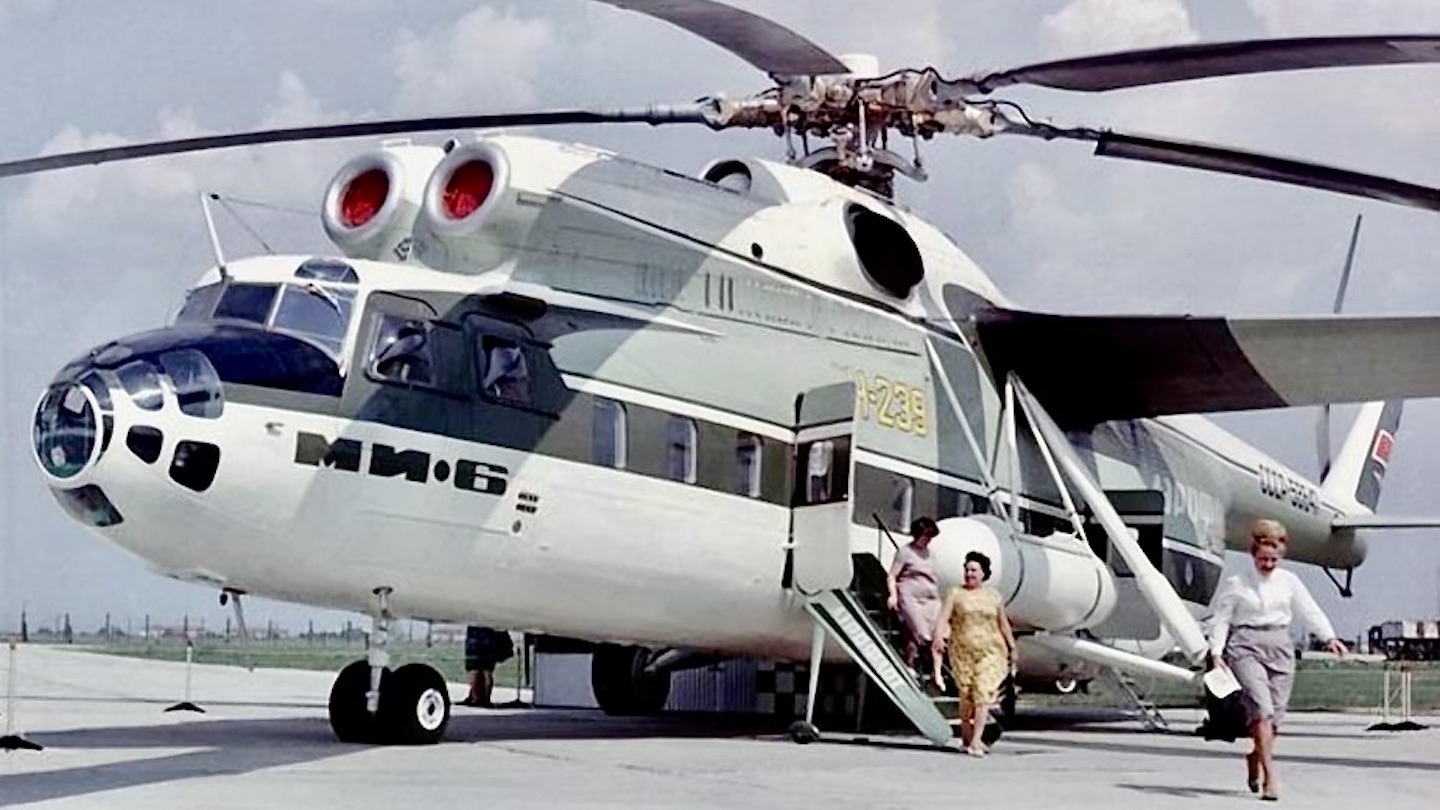The Soviet-era Mil Mi-6 Hook was a colossal helicopter. It was the largest production rotary-wing craft until its successor, the Mi-26, came into existence. Clocking in with a greater overall length than the C-130 Hercules transport, the Mi-6 was used for all manner of military and civil aviation applications within the USSR. However, a little-known commercial variant was developed in the mid-1960s to help usher in a new rotary-wing era for Soviet air travel.
That aircraft, the Mil Mi-6P (passazhirskyi, meaning passenger) seen in the feature image above, never made it to full-scale production — the precise reasons for which are unclear. Only one Mi-6P demonstrator, registered as CCCP-58647, c/n 6682905V, was ever built. However, imagery from the time period shows that, if the monster passenger-carrying Mi-6 variant had been mass-produced, it would have offered a flying experience like no other.
Created from a stock Mi-6, CCCP-58647 measured roughly 109 feet long and over 32 feet high. This particular Mi-6 featured relatively large stub wings mounted on the upper-mid fuselage area, which were used to create lift and unload the rotor, improving overall performance and efficiency substantially during the cruise phase of flight. These wings were not specific to this sub-variant, but they made especially good sense for commercial passanger applications.
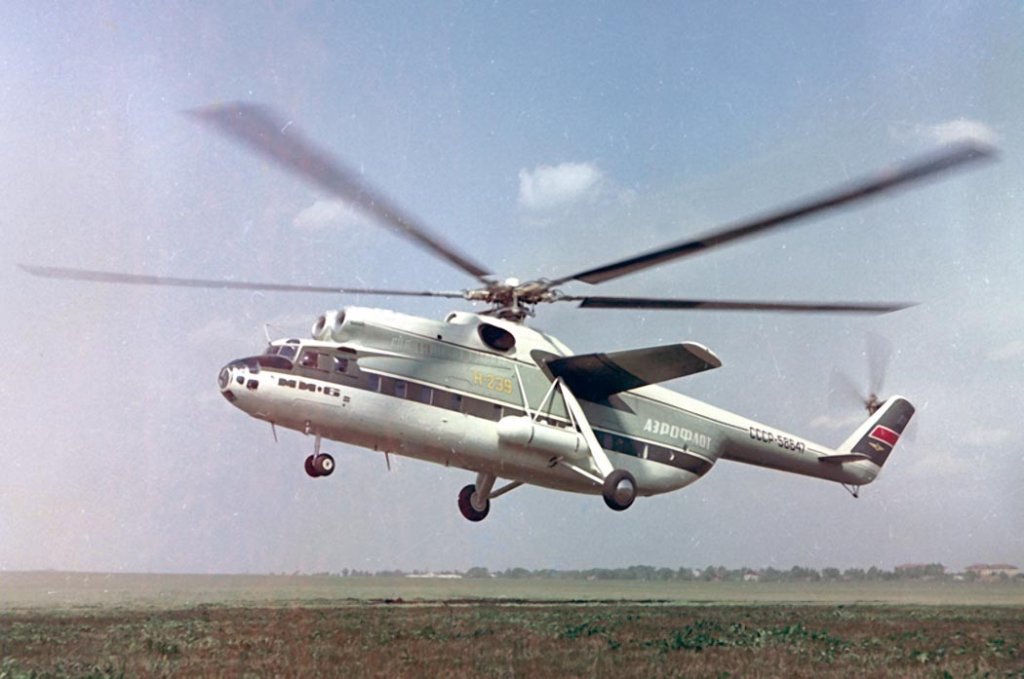
The other primary change for the demonstrator came inside the helicopter’s interior. Airliner seating, accommodating up to 80 passengers, five-abreast in a three plus two configuration, was added, along with carpeting, overhead storage areas and reading lights. Passengers were able to look outside the aircraft thanks to large rectangular windows. An on-board toilet was also installed, alongside heat- and sound-proofing.

In terms of other modifications, the rear clam-shell doors and cargo ramp of the underlying Mi-6 were replaced with an identically shaped fairing, incorporating built-in airstairs on the centerline and an AI-8 auxiliary power unit.
The idea of developing the already mammoth Mi-6 into a passenger-carrying helicopter was pushed by Aeroflot Soviet Airlines in 1965. However, Aeroflot had already shown significant interest in the Mi-6 — military testing of which began in the late-1950s — by this point.
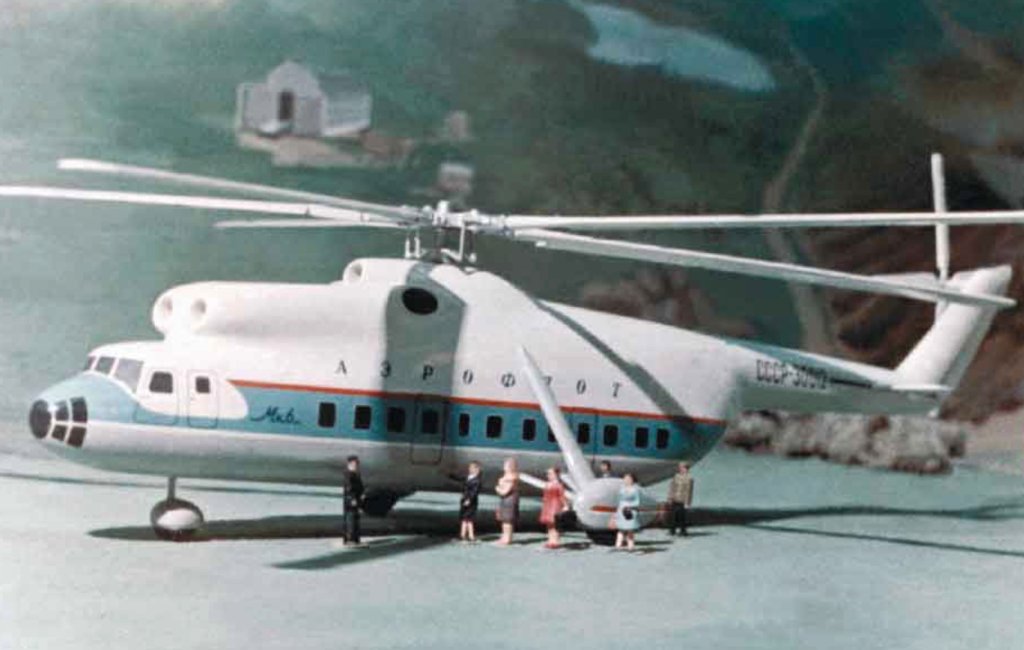
Heavy-Lift Helicopters
In 1963, the airline stressed the need for a civilian transport version of the Mi-6 in order to help support construction as well as oil and gas work in the eastern parts of the USSR. A demonstrator of that aircraft, registered as CCCP-06174, c/n 06175, made its international debut at the 25th Paris Air Show in May of 1965 and later went on to enter production.
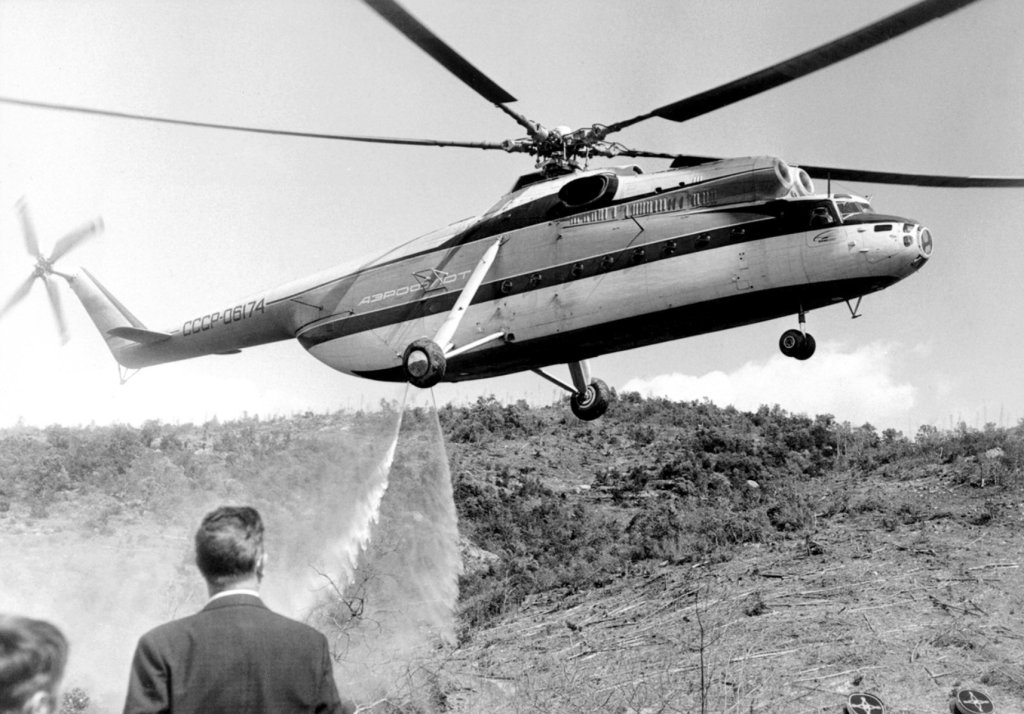
It was not until a few years later that the completed passenger demonstrator of the Mi-6 made its first appearance at the 1967 Paris Air Show. Held June at the Paris–Le Bourget Airport, the Mi-6P was revealed to the public. Featuring the 1967 Le Bourget exhibit code H-239, images of the helicopter taking to the air, captured at the air show, can be seen below.

Other pictures of the demonstrator, taken at the Moscow-Domodedovo airshow held at Domodedovo airport in July 1967, can be seen below.
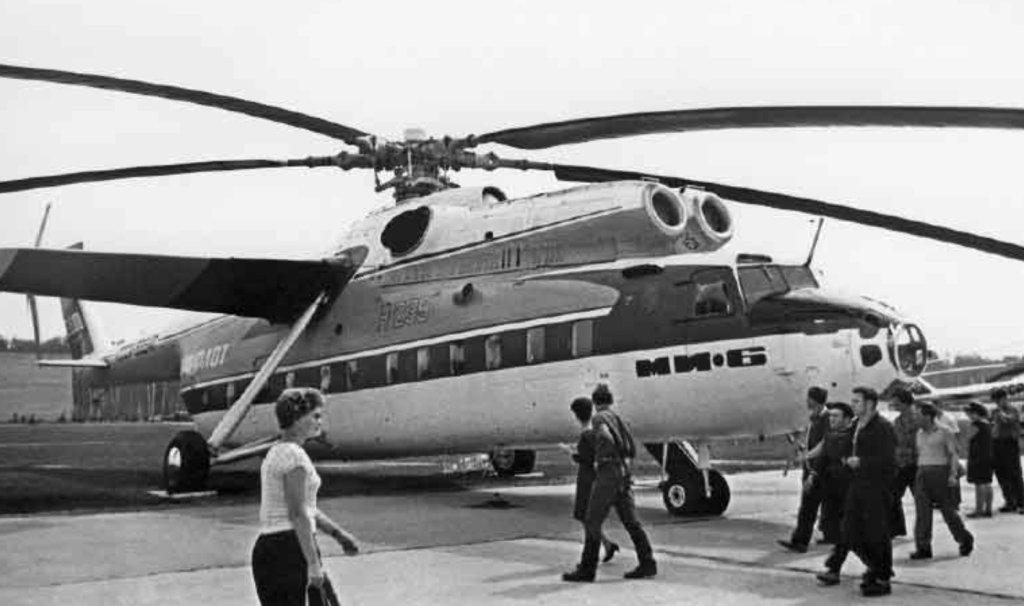
Heavy-Lift Helicopters

Heavy-Lift Helicopters
Aeroflot’s need for a large-capacity passenger helicopter in the mid-1960s came due to its increasing operation of commercial helicopter flights within the USSR and in the context of its fleet of smaller-sized helicopters.
The airline had provided customers with the ability to fly via helicopter to various locales within the USSR for some time. In 1958, for example, it began offering an air taxi service between the cities of Simferopol and Yalta on the Crimean Peninsula, via 16-seat Mil Mi-4s. Flight routes were later expanded in the Black Sea region, and others were opened up between Moscow and its various airports.
As the number of commercial helicopter routes within the USSR increased into the 1960s, the need for higher-capacity passenger helicopters, able to travel greater distances, increased. In 1967, for example, the 28–31 seat Mil Mi-8 entered service with Aeroflot at around the same time that the colossal Mi-6P was being shown off to the world as part of the future of Soviet civil aviation.

However, for reasons that remain murky, the Mi-6P was never put into mass production. Eventually, CCCP-58647 was transferred over to the Soviet Air Force on May 12, 1970.
Despite the fact that Aeroflot never operated the Mi-6P, it should be noted that other large passenger aircraft concepts were later explored by the USSR.
In the 1980s, for example, a special passenger version of the Mil Mi-26 (NATO name Halo) — the Mi-26P (passazhirskyi), a later-day Mi-6P — which could accommodate up to 63 passengers, was mocked-up in model form. Later, studies for a 70-seat ‘heli-liner’ version of the Mi-26TS were conducted, although the project was not brought to fruition. Although design work for the Mi-26 began in the early- to mid-1970s, it was not until the early-1980s that the helicopter was introduced into service. The Mi-26 was created due to the need for a heavy-lift helicopter capable of transporting greater loads than the Mi-6.
While the Mi-6P was never used as intended, it’s certainly interesting to look back at what this monster of a passenger helicopter — and others it inspired — could have been.
Contact the author: oliver@thewarzone.com
